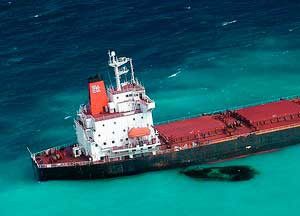By San Olson
The Gateway Pacific Terminal will provide short term construction jobs and a few hundreds of operational jobs, but these gains should not deter us from evaluating the long-term economic impacts of the terminal on local, regional and global economic health.
Local economic consequences of increased rail transport of coal from the Powder River Basin to Cherry Point include: No. 1: coal trains displacing trains carrying agricultural products, general freight, or passengers; No. 2: cumulative delays of auto and truck traffic at grade crossings resulting in increased roadway congestion; No. 3: a general decrease in productivity (commuter and product delivery delays, reduced retail, hospitality, and tourist commerce); No. 4: potential life threatening delays during medical emergencies; No. 5: train noise and diesel emissions will decrease property values along the railway and increase respiratory and cardiac illnesses in residents near the tracks.
The increase in very large ships transiting the Salish Sea and the Gulf and San Juan Islands will have regional impacts. No. 6: the risk of collision, grounding, or maneuvering casualty increases with the number of vessels passing though our narrow channels; No. 7: this increases the odds of a large fuel spill reaching critical shorelines within one tidal cycle; No. 8: a significant spill would be catastrophic to endangered species such as Chinook salmon, Orca, and seabirds; No. 9: a large spill would significantly impact the more than $50 million in revenues from tourists attracted to the San Juans by the natural beauty of our islands.
Burning 130 million tons of US coal in Asia will have long-term, cumulative, global economic consequences.
No. 10: the increased CO2 and other greenhouse gases entering the atmosphere and oceans will profoundly alter rainfall patterns, amounts, and duration; No. 11: agricultural production will be impacted, creating food insecurity and commodity disruptions worldwide; No. 12: ocean acidification will disrupt the foundation of the marine food chain; No. 13: nearshore shellfish habitats and the nurseries of our most economically important fish species will suffer decline if not collapse; No. 14: Economic losses among fisherman, shellfish growers, and tourism-based employees will dwarf any jobs gained from coal exports.
No. 15: Our vast coal resources are an invaluable strategic energy stockpile that should be reserved for an uncertain climatic and financial future; No. 16: future technology to actually develop ‘clean coal’ could make the US energy independent, leaving coal in the ground makes strategic sense and is a hedge against climate disaster.
Pollution from burning coal in Asia returns in the form of secondhand smoke, affecting our personal health and natural resources. It’s as if we gave up cigarettes only to find ourselves downwind of a multitude of heavy smokers who are smoking cheap, subsidized, cigarettes we sold them.
The US should lead by example and work towards sustainable economic and environmental solutions for world energy needs, not enabling a dangerous dependence on a fuel that is economically harmful and unhealthy for the planet. An EIS addressing these 16 points will help reveal the true economics of the proposed Gateway Pacific Coal Terminal.
— Editor’s note: Former naval officer San Olson was a veterinarian for 33 years before retiring to Lopez Island in 2000. He is a Marine Mammal Stranding Network and IOSA volunteer.




